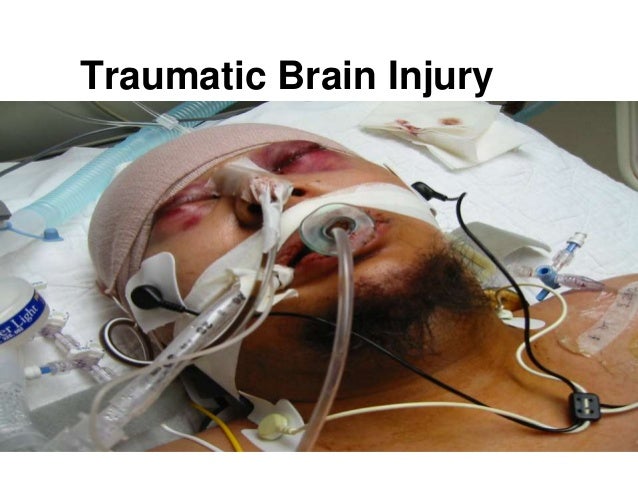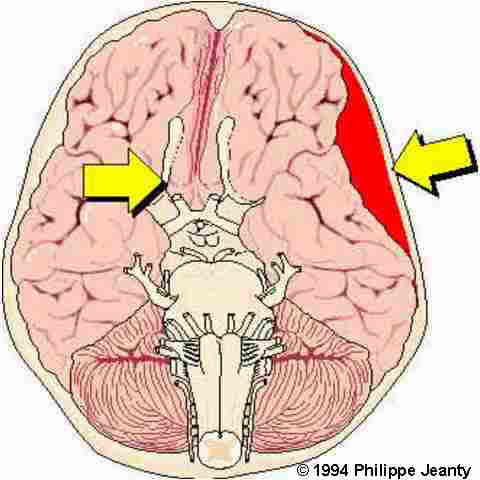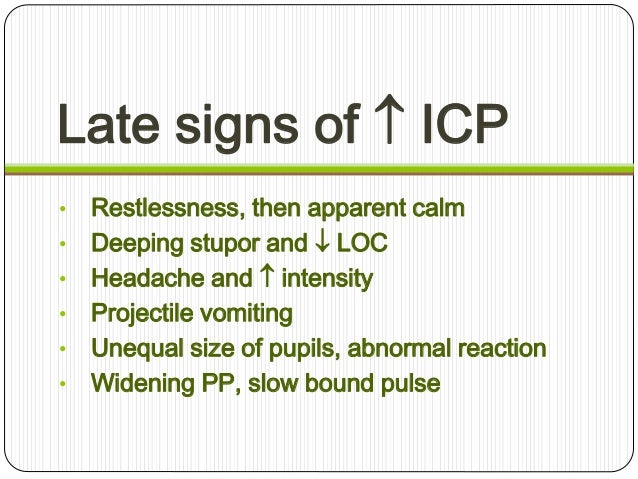
One source has estimated that between 1,000 and 3,000 children in the United States experience shaken baby syndrome each year. If a person handles a baby or infant too roughly, it may cause them to develop a brain injury. In infants, high ICP may be the result of child abuse. brain infection, such as meningitis or encephalitis.hydrocephalus, or too much cerebrospinal fluid on the brain.

brain injury, which is often the result of a blow to the head.This is part of the Perrla Neuro Assessment.The following is a list of medical conditions and other causes that can lead to increased ICP: You can touch the patient to observe other signs. You should note all the irregularities you find in the patient. You can also ask the patient to stick out the tongue so that you can observe any irregularities that occur in the patient. You should compare the baseline of the patient. You should observe the symmetry of the patient’s face by asking the patient to raise an eyebrow or smile. Perrla will be performed for patients with the condition. This assessment is done when the patient is in a condition of coma, fainting, lethargy, and so forth. This test will perform an examination of the level of awareness of the patient. This test will assess the emotional, mental, physical, verbal, and visual responses of the patient. This time can be added according to the patient’s needs. This check should be done every 15 or 30 minutes. Usually, this assessment will be performed for patients with head injury and CVS. This test can ensure that the neurological function of the patient is not impaired after surgery or injury with certain conditions. This quick test can see the level of awareness of the individual. This test may be the reaction of a fainting individual. This examination is used to look at neurological function and level of consciousness in individuals. The dilated pupil is a herniation disorder. Inactive pupils are caused due to blood clots or pressure on certain nerves. The category is no reaction, slow, and fast. These abnormalities should be recorded according to the categories contained in the guidelines. Pupils can cause opposite reactions and do not widen when seeing light.

If the light is removed, the pupil must be able to return to its previous size in a short time. The pupil must react quickly to bright light. Pupils should also have identical shapes. Pupils with oval shape are a sign of hypertension. Abnormal pupils can occur because of a damaged cerebral. The pupil must have a perfectly round shape. The assessment will also observe the shape of the pupil. The pupil size is 2 to 5 mm and both should have the same shape. Usually, this measurement will see the observation diagram. The size of the pupil also requires measurement. If there is a change in the assessment, then this is an indication of ICP. This nerve is responsible for controlling the pupil so that the pupils can narrow and widen (see : Eye Assessment Documentation). This assessment is done on the cranial nerves by looking at the pupil’s reaction. Contraction and relaxation will cause the muscles to widen and narrow automatically when they see light or darkness. The muscle diaphragm of the iris lies in the flattened condition and attaches to the cilia. The pupil has a color that is located right in the middle of the iris. The first assessment is done by looking at the physiology and anatomy of the pupil. Perrla Neuro The Importance of Perrla Neuro Assessment This practical procedure can make you understand to do pupil assessment.

This assessment is not a component of Glasgow coma scale but this is the most important addition when the patient is unconscious. Pupils should also have the same shape and size so that it can be called normal. The pupil must be able to create the same reaction when seeing the light. This is the diagnostic information required by patients with severe disease. This assessment may inform the change in the reactivity, equality, and size of the pupil. The Importance of Perrla Neuro Assessment is a component present in a neurologic assessment.


 0 kommentar(er)
0 kommentar(er)
